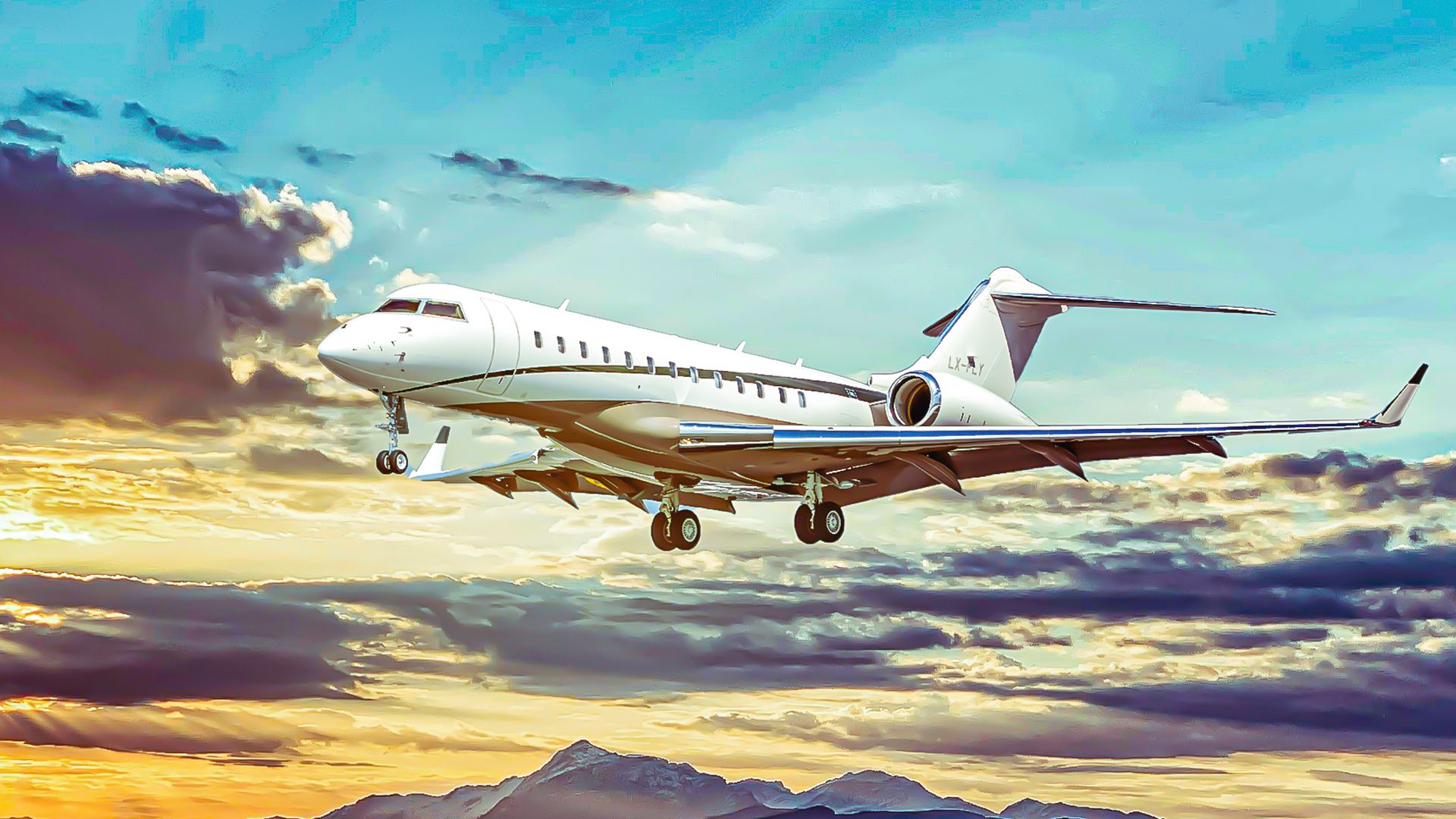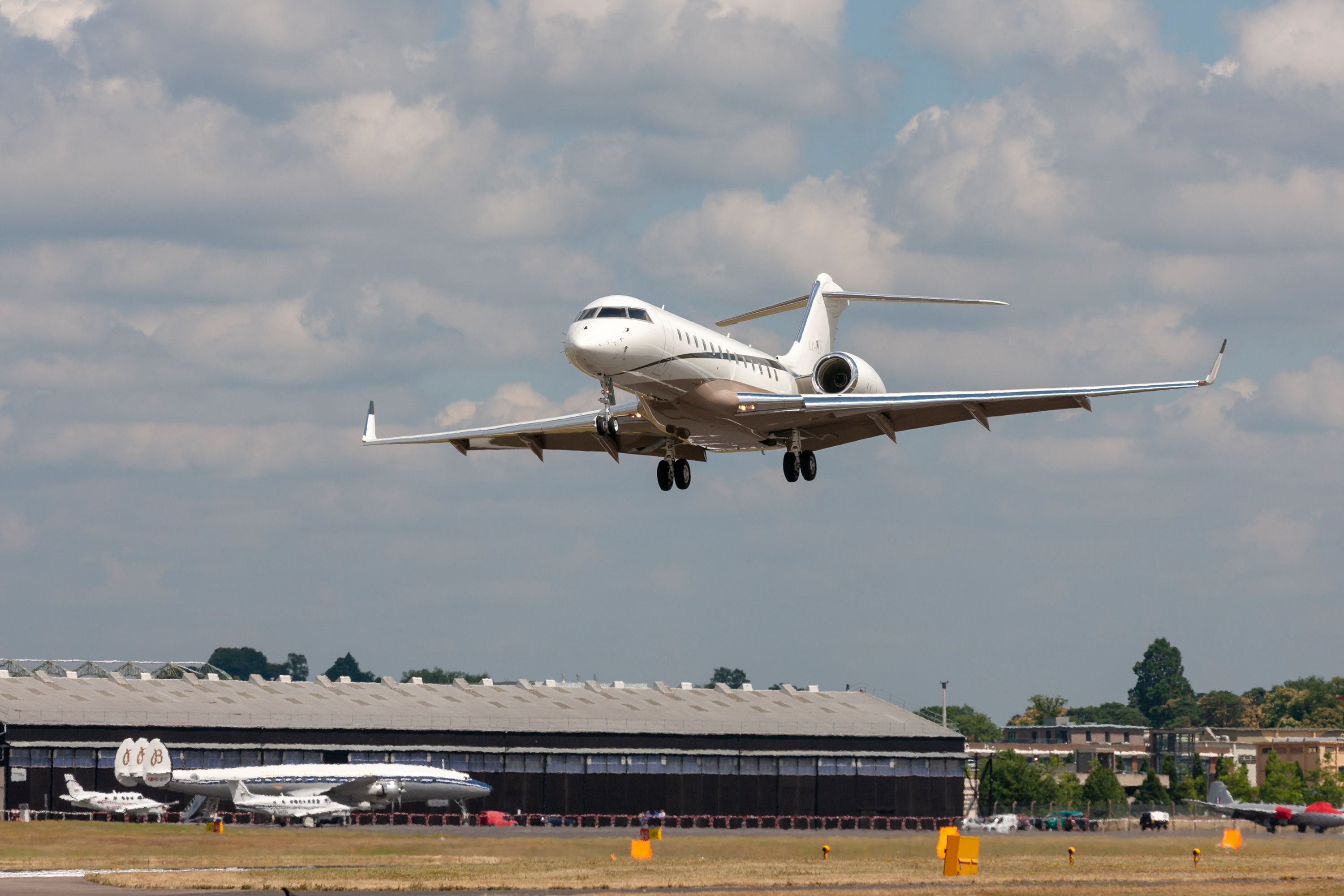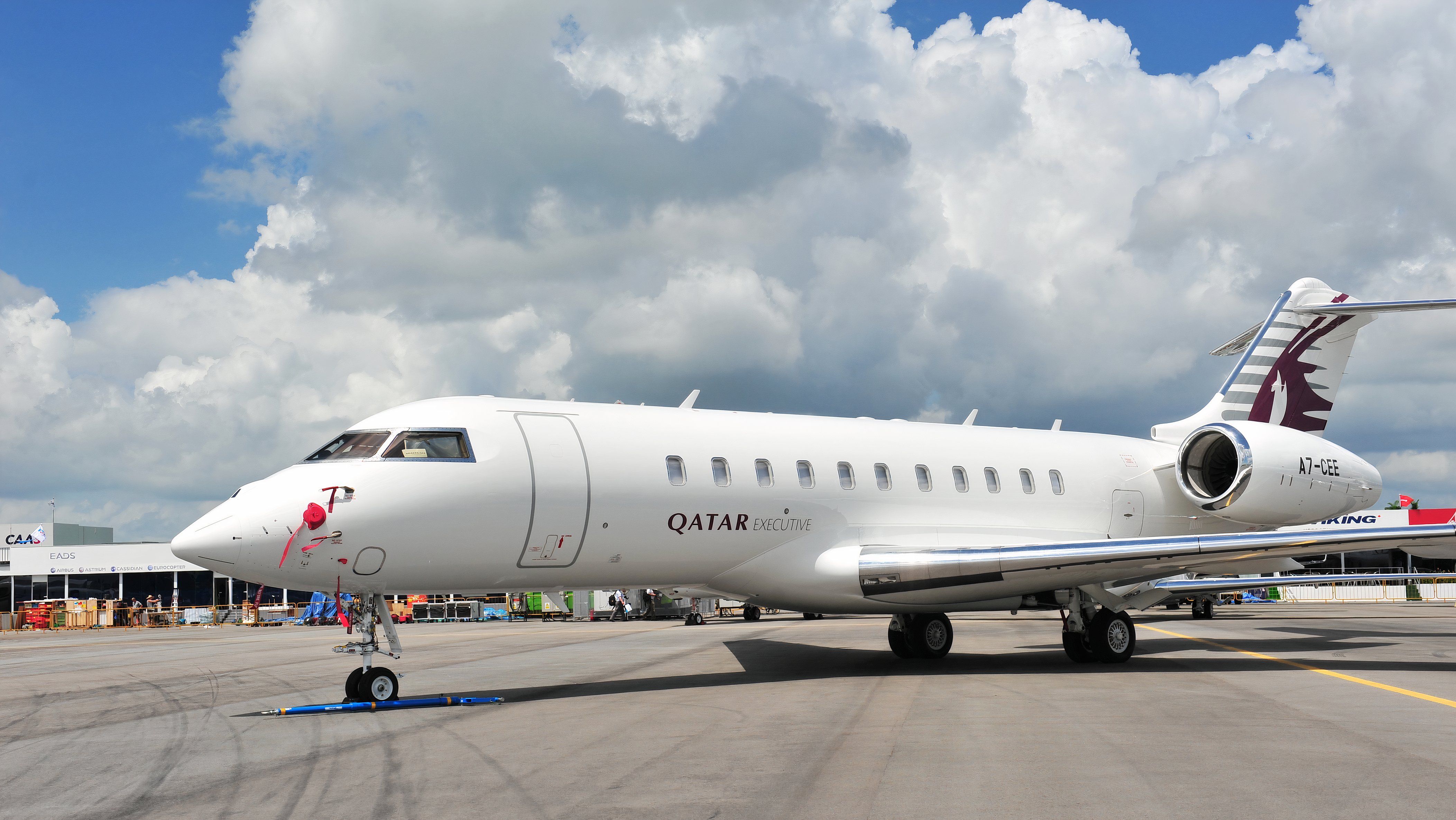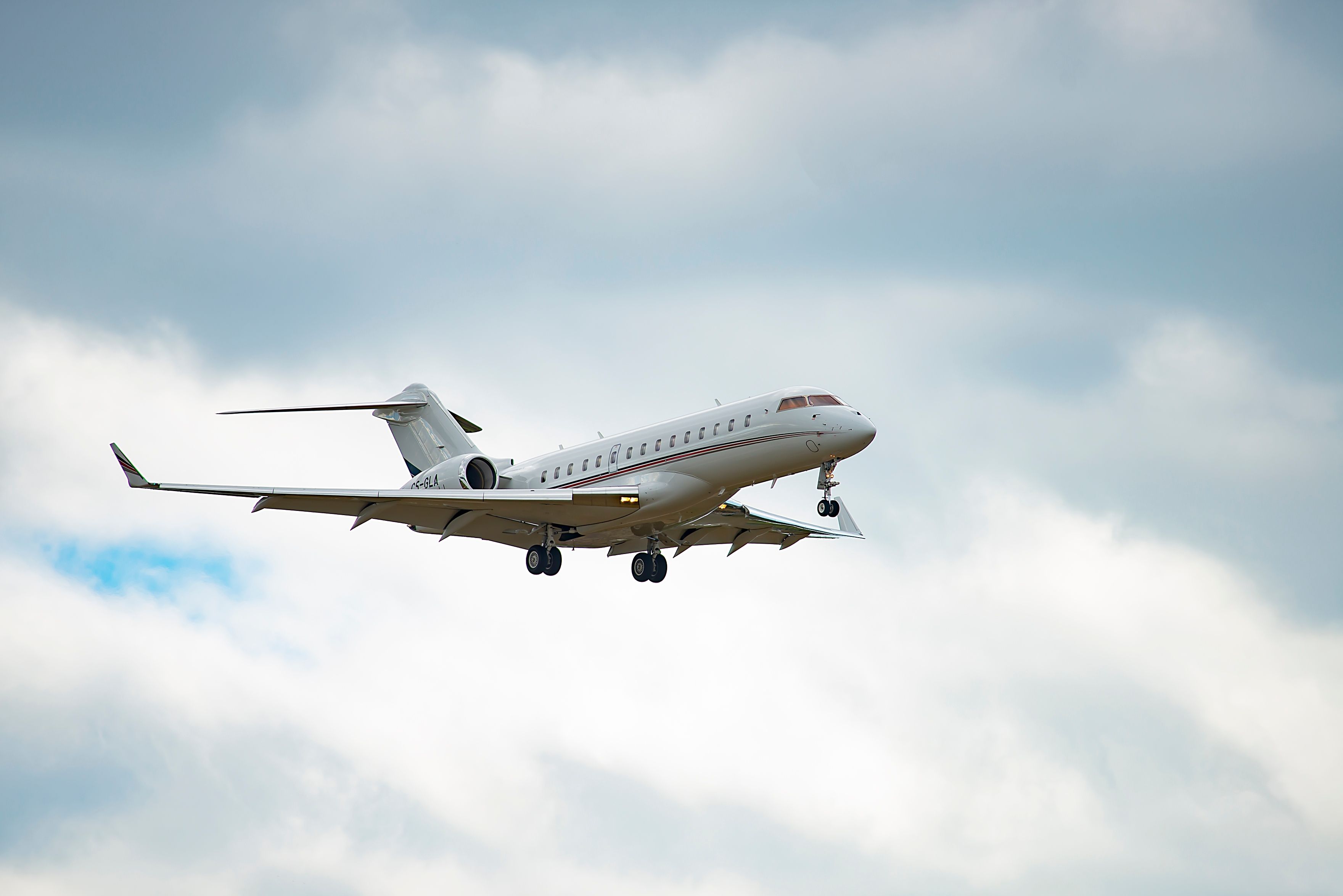Summary
- The iconic Bombardier Global Express family launched in 1991, with over 800 planes in service globally.
- The aircraft offers high-speed, long-range capabilities, equipped with BMW-Rolls-Royce engines and Honeywell avionics.
- Multiple variants like the Global 5000, 6000, and 5500/6500 have been developed, with the Global 6500 offering impressive specifications.
One of the first full-size business jets to take to the skies, the
Bombardier
Global Express family has undeniably become one of the most iconic private jets flying today – the large-cabin long-range business aircraft was designed by Bombardier Aviation, a Canadian heavy industry conglomerate that continued to develop a name for aerospace and rail transportation throughout the 90s.
While the manufacturer had long been known for regional jets and was beginning to look towards larger commercial aircraft (the company designed what would later become the Airbus A220), it would soon become known as one of the most important manufacturers of private aircraft globally.
Photo: Ryan Fletcher | Shutterstock
The Global Express family was launched back in 1991, first flew in October 1996, and eventually received a Canadian-type certificate in July 1998, before it was finally delivered to customers in 1999. Today, the Global Express remains emblematic of modern corporate aircraft, and over 800 have entered service with private operators across the globe.
The plane, which is powered by a pair of rear-mounted turbofans, shares many design elements in common with other Bombardier corporate aircraft. Let’s take a deeper look at the development, history, and design of the Bombardier Global Express.
Development and conceptual origins
The origins of the Global Express program come from Bombardier’s 1986 acquisition of Canadair, which offered the Challenger 600 business jet program, from which the Global Express would offer many similar design features.
Bombardier later chose to develop a long-range corporate aircraft capable of transporting up to eight passengers and four crew members. Bolder yet, the manufacturer sought a top speed of Mach 0.85, according to FlightGlobal.
Photo: Jordan Tan | Shutterstock
A coalition of different manufacturers, including the Bombardier-acquired Canadair, Japanese Mitsubishi Heavy Industries, German BMW, and British Rolls-Royce, got to work in Montreal in the early 1990s, beginning to explore this new concept.
By 1994, the team had drastically expanded to over 200 engineers, who used advanced tools to improve structural design and integrity. The aircraft had lofty goals, including over 99.5% dispatch reliability and ETOPS design principles. Despite these technological advancements, the manufacturing team chose to incorporate a conventional mechanical flight control system instead of a more advanced fly-by-wire system.
The Global Express program was launched in 1993, with orders exceeding 40 jets by the time 1995 came around when the prototype had even been assembled. By the time the first test flight took place in 1996, the order book had expanded even further. In total, the family had amassed over 2,200 flight hours.
The Global Express would soon be type certified in 1998, before being delivered to customers in 1999. A successful aircraft from the start, the jet would remain in serial production to this day, with Bombardier eventually choosing to move the aircraft’s primary assembly lines to Toronto Pearson International Airport (YYZ). While production has slowed over time, the company has had a backlog of over 200 aircraft as of 2018.
An impressive design that has remained popular over time
The designers of the Global Express aimed to target a high-speed design that could also deliver impressively on both range and performance. The aircraft, which was capable of traveling over 6,500 nautical miles at an impressive top speed of Mach 0.8, could manage to stay airborne for over 14 hours at a time.
The jet had a service ceiling of 51,000 feet and offered an airframe constructed from lightweight alloys that offered impressive efficiency. Drawing upon the popular design of the Canadair CL-600 and Bombardier CRJ, the Global Express also offered a low-wing design with tricycle landing gear and rear fuselage-mounted turbofan engines.
Photo: Vytautas Kielaitis | Shutterstock
However, the Global Express did include some modifications of its own, with a new T-tail and a redesigned airfoil wing with a 35-degree backward sweep. Further improving fuel efficiency on its predecessors, the aircraft incorporates winglets into its design.
Originally equipped with a pair of BMW-Rolls-Royce BR710 turbofans, the powerful aircraft could cruise at impressive speeds while also handling turbulence with ease. The flight deck features an impressive suite of Honeywell Primus 2000XP EFIS avionics, among the most advanced to be incorporated into the cockpit of a business jet.
The Global Express also made a name for itself as a leader in passenger comfort, with the largest cabin among business jets in its class. (The Gulfstream G650 did eventually take this title, however.) The aircraft’s cabin can fit around 15 passengers with three dedicated areas, all of which serve unique purposes. In the aft of the aircraft is a divan, which can provide rest for the primary traveler.
Variants and specifications
As the aircraft was initially produced in 1998, it is unsurprising that the aircraft has been modified multiple times over the decades to maintain technological pace with Bombardier’s other competitors in private aviation. Over 800 have been built, and they have been produced across the following variants:
- Global 5000
- Global Express XRS
- Global 6000
- Global 5500/6500
The first modified variant, the Global 5000, was announced in October 2001, and a total of 224 remained in service in 2018, according to an analysis from Aviation Week. The Global Express XRS, which was announced in the fall of 2003, offered improved range, speed, and takeoff performance.
Later variants, such as the Global 6000 and the Global 5500/6500 entered service in the 2010s, and offered additional improvements. Select models were also converted for military service in roles such as VIP transport and reconnaissance. Here are some specifications for the Global 6500, one of the latest and most capable models:
|
Category: |
Global 5500/6500 Specification: |
|---|---|
|
Length |
99 ft 5 in (30.3 m) |
|
Maximum Takeoff Weight (MTOW) |
99,500 lbs (45,132 kg) |
|
Top Speed |
Mach 0.9 |
|
Range |
6,600 nautical miles (12,223 km) |
|
Service Ceiling |
51,000 ft (15,545 m) |




